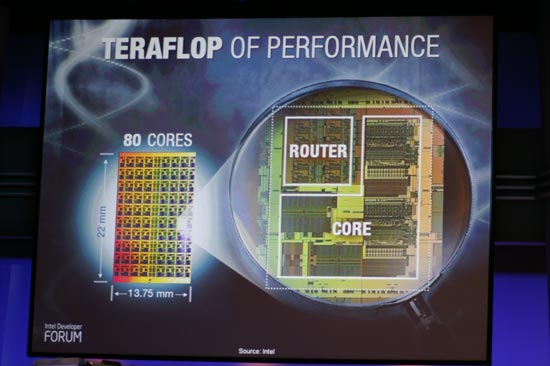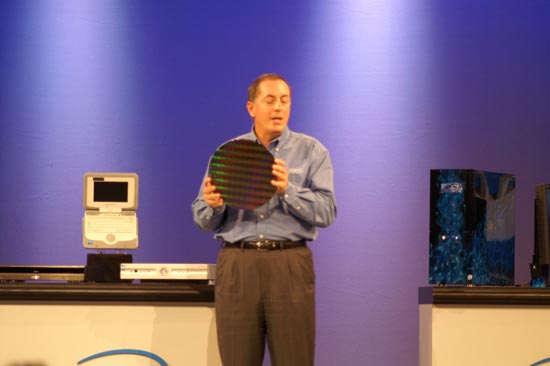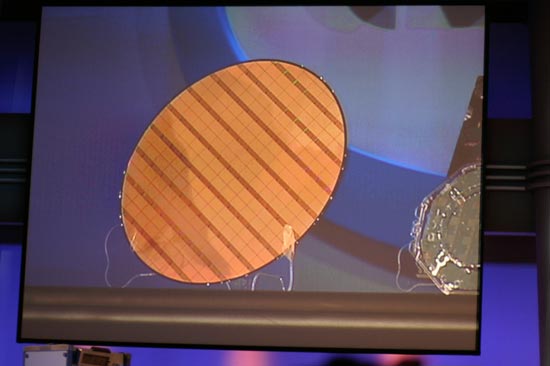Fall IDF 2006 - Day 1: 45/65nm, UMPC Update and Quad-Core
by Anand Shimpi & Larry Barber on September 26, 2006 5:03 PM EST- Posted in
- CPUs
Intel's Answer to Cell: The Teraflop chip
When Sony's Cell architecture was first introduced, everyone looked to Intel for an answer - and the best we got was that the foreseeable future of multi-core computing would be x86 based. When Cell was first announced, a processor with 9 cores was unheard of as we were just being introduced to Intel's dual core offerings and quad core was just a pipedream. By the time the PlayStation 3 launches, dual socket Xeon systems will be able to have the power of 8 very powerful x86 cores and all of the sudden the number of cores in Cell stops being so impressive. But there is quite a bit of merit to Cell's architecture and design, as Intel has alluded to many times in the past, and today Intel showcased a processor that is very similar in design.

Intel outfitted a single chip with a total of 80 very simply cores, that combined can execute a peak rate of 1 trillion floating point operations per second. Each core uses a very simple instruction set, only capable of executing floating point code, and are individually quite weak. But the combined power of the 80 cores is quite impressive, and it's directly taking a page from the book of Cell. While Cell's SPEs are likely more powerful than each of the cores in the teraflop chip, the design mentality is similar.

The facial expression is a side effect of holding a wafer of teraflop chips
Intel showed off a wafer of these teraflop chips, with a target clock speed of 3.1GHz and power consumption of about 1W per 10 gigaflops - or 100W for 1 TFLOP. The chip is simply a technology demo and won't be productized in any way, but in the next 5 years don't be too surprised if you end up seeing some hybrid CPUs with a combination of powerful general purpose cores with smaller more specialized cores.











12 Comments
View All Comments
gersson - Tuesday, September 26, 2006 - link
I would also like to make a generic statementPeteRoy - Tuesday, September 26, 2006 - link
Good to hear that there's still more to come.